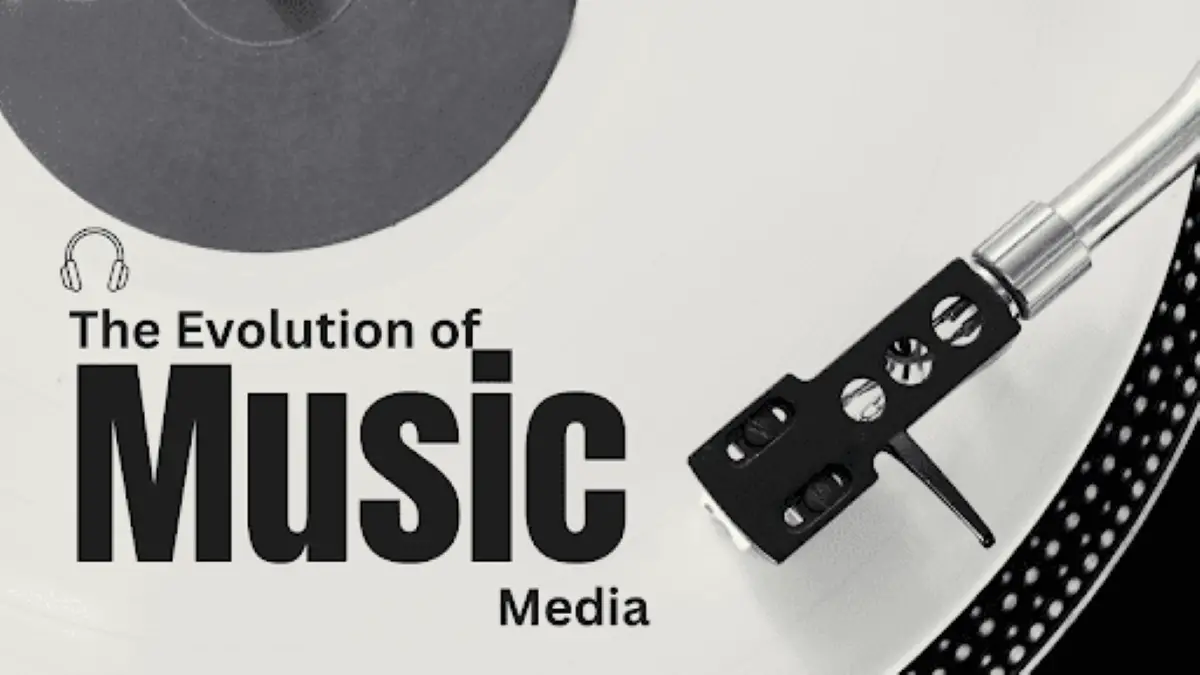Music media inform the manner in which humans use and perceive sound. It’s ironic to recall that not many years ago, we couldn’t access any tune at will instantly, and now look at the evolution of music media.
I remember seeing a record player at my grandparents for the first time—I must have been ten years old and totally amazed at seeing such big discs whizzing around. My granddad kept saying, “Be careful with the needle,” but I carelessly scratched one of his prize Ella Fitzgerald LPs in any case. That little lesson I gained two important lessons: have care for the fragility of physical forms and under no circumstances touch the needle alone!
First Step of Evolution of Music Media: Early Sound Recording
Recorded sound effectively started with Thomas Edison’s phonograph in 1877, with use of wax cylinders, in retrospect, such fragile forms. They played for a relatively short period and could be a little persnickety, too. Next, Emile Berliner’s gramophone appeared and took over with flat shellac discs, easier to produce in bulk—this changed big-time. Folks could then buy recorded sound and pass it around, paving the path for commercial sound’s birth.
Vinyl Records: Culture Icon
Soon, vinyl took over for shellac as a milestone in the evolution of music media because it sounded sweeter and couldn’t break so easily. Two important forms developed during this era:
LPs (Long Play): 12-inch discs with whole albums or collections of songs. This enabled them to produce theme-albums or “concept-albums,” with larger stories conveyed through sound.
45 RPM Singles: Smaller discs with one or two songs, and therefore less expensive and easier to move about. Ideal for one-hit wonder types who simply wanted the current hit.
One of my fondest memories is flipping through my parents’ record collection in their living room. Old record covers and new tunes full of anticipation (or did I misspell that one?) and smells unforgetable (I hope I misspelled that one, too!). To this day, I enjoy flipping through vinyl bins at thrift stores, hunting for hidden treasures.
Magnetic Tape and Cassette Tapes
Studio recordings were augmented with reel-to-reel tapes, and engineers could layer several recordings, and they sounded pretty darn good, too. For use in real life, however, the compact cassette reigned supreme in the ‘70s and ‘80s because it was smaller, less expensive, and you could record your tapes yourself.
I must have spent a full half of my high school years crafting mix tapes for my friends. It was such a painstaking but sweet ritual—hitting “Record” and “Pause” at precisely the correct times in order to miss out on radio DJs’ chat. I shudder recalling how many times I inadvertently over-taped a favorite tune.
8-Track Tapes: Strange Detour
8-track tapes had a following in the ‘60s and ‘70s, particularly in cars. You could not have to switch sides, but neither could you rewind—so, miss a section of a tune, and forget about it. Ultimately, the more convenient and flexible cassette replaced 8-tracks, with added portability and ease in taping over them.
Compact Discs (CDs) and the Break of the Digital
CDs, when they showed up in the 1980s, wowed everyone with perfect sound reproduction and marked itself in the evolution of music media. I remember scrimping my allowance for my first CD: Michael Jackson’s Thriller. Back then, it seemed almost out of a sci-fi movie—no crackle, no rewinding, and the rainbow glint on the disc’s reverse seemed high-tech enough. Suddenly, CDs had a lot of followers and fans!
By the late 1990s, my CD collection took over an entire bookshelf in my room, each one with a booklet I’d pored over cover to cover. CDs reigned supreme through the early 2000s, when everything grew…trickier.
The Digital Revolution: MP3s and File-Sharing
The development of MP3 compression shrunk audio files down to a size that could be shared over the web. With Napster, humans began trading audio files for free, and record labels and labels panicked in reaction. I’d be lying if I say I never loaded a few tunes for free, but I did have a little taint of guilt with each one, half-thinking I’d have an FBI knock at my door soon enough.
The iPod then appeared, and suddenly, a thousand tunes could fit in your pocket. That fueled a big controversy over intellectual property and fair pay for performers in a new age when no one needed a record in a record player any more.
Streaming Services and the New Norm
Streaming took over with growing bandwidth, and with it, streaming services such as Spotify and Apple Music enable access to a million tunes at your fingertips. On one level, it was incredibly convenient, but many questioned its impact on record earnings for performers. I’ve debated with friends ad infinitum whether streaming undervalued music, but it brings new talent to an audience with ease, too.
The Vinyl Comeback and Other Niche Formats
And yet, in a seeming contradiction, vinyls have experienced a surprising renaissance in a streaming age. I rekindled my love for vinyl a few years ago and enjoyed all over again how much I’d missed about it—the tactile pleasure of putting record onto record player, gently dropping needle, and enjoying artwork in big format.
Cassettes, too, have re-emerged here and there, specifically in indies, and a hundred tapes can sound new and nostalgic in a run. It’s incredible how older formats persist and re-emerge, and that convenience isn’t necessarily paramount when listening to tunes.
The Role of Social Media
A platform like Instagram can drop a tune out of nowhere and make it a worldwide sensation overnight, in fact some artists buy followers so that they can expand the fan base. I have no idea how many times I have heard a tune through a laugh-out-loud 15-second clip, then gone and played out the full album through streaming. Artists rely increasingly on social networks for direct fan contact, for Kickstarting, and even for full virtual shows.
The Future of Sound
The next step in the evolution of music media could include high-fidelity streaming, immersive sound experiences such as Dolby Atmos, and even distribution through blockchain, with payments assured for artists in a timely manner. Perhaps, too, we will have even more AI-made tunes, with questions about origin and who “owns” such tunes.
Regardless of technology’s relentless development, humans’ relation to sound remains strong and strong and strong. Whether a one-off vinyl record, a valued mix tape, or a streaming mix that varies with each new day, we invent new forms of sound and make sound intimate and personalized. That’s what keeps me hyped for whatever comes next, even when I scratch a record and mislabel a mix tape tune in between.



